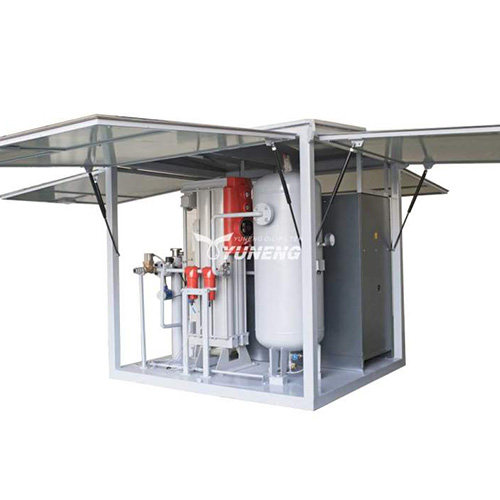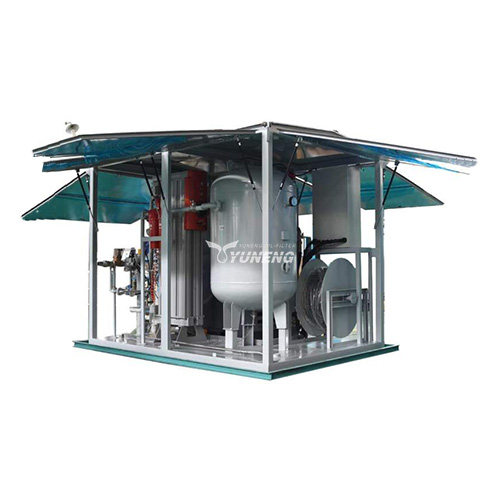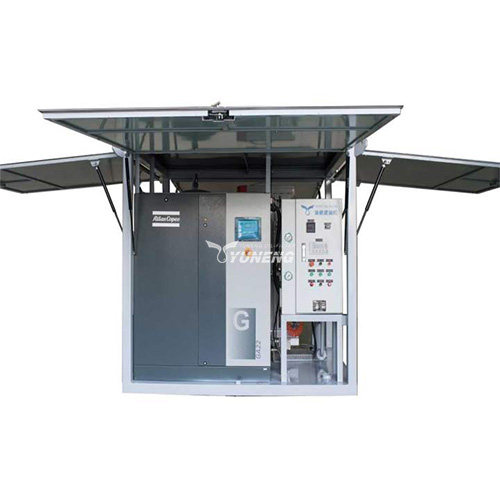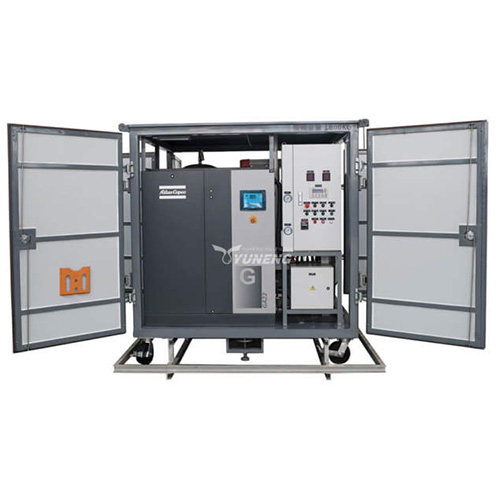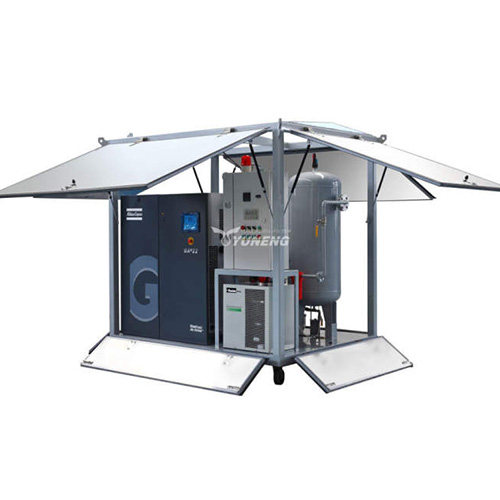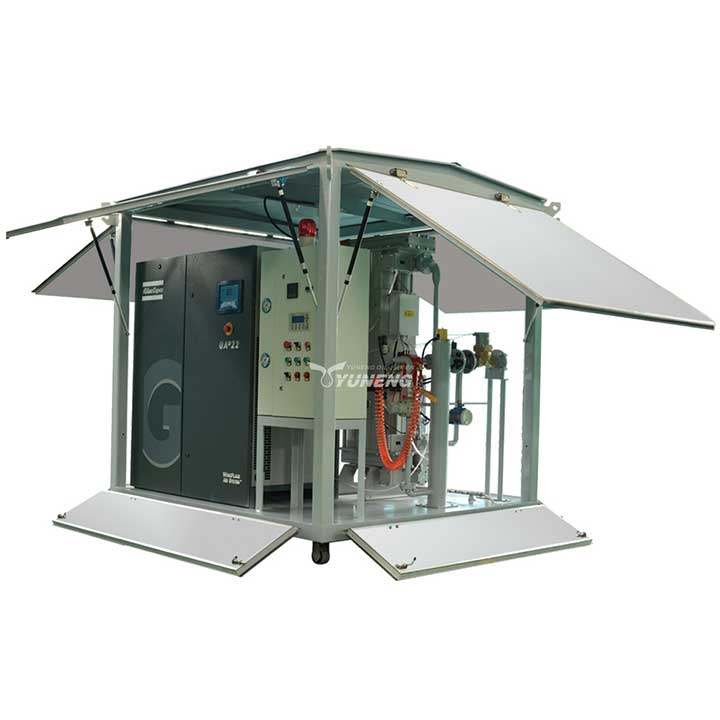Stationary vs. Portable Dry Air Generator: Which Suit You Better?
Table of Contents
Transformers are essential devices for the transmission and distribution of power and are available for industrial production and supply of power. Moisture would be the biggest threat to transformer performance, leading to insulation deterioration and a decrease in service life. A transformer dry air generator is an excellent device to control humidity, insulate against moisture, and ensure reliable operation.
Here, we’ll compare fixed and mobile dry air generators, talk about where they are applied, and help you choose which one will most conveniently fulfill your operational needs.
How Dry Air Generator Used for a Transformer?
Transformers are extremely sensitive to water, which can accumulate in insulation and oil over time, leading to reduced efficiency, insulation breakdown, and even unexpected failures. A transformer dry air generator would be meant to reverse this problem by pumping low-humidity air into the transformer tank or conservator system.
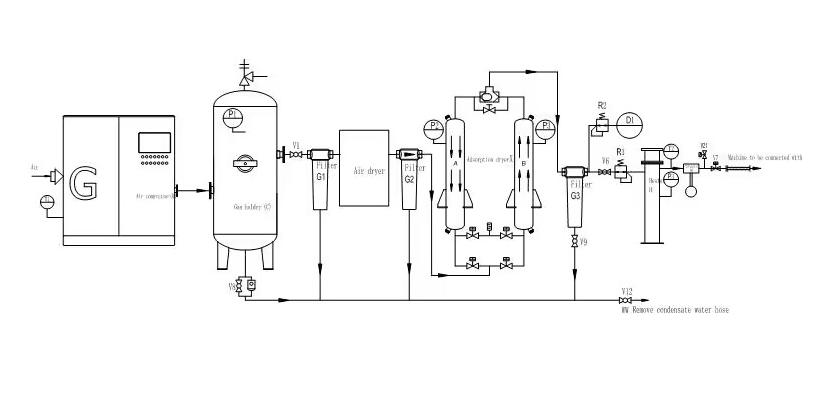
By continuous moisture extraction from the internal environment, the dry air generator helps in the maintenance of optimal insulation conditions, transformer life extension, and reduction of chances of operational downtime. Such systems are utilized in real-world applications in transformer commissioning, routine maintenance, long-term storage, or emergency drying situations.
Correct choice and operation of a dry air generator depend on transformer size, location, and service requirements. There are stationary and portable options, each having its own merits suited to certain maintenance strategies and conditions in the field.
Application Scenarios for Stationary vs. Portable Dry Air Generator
Choosing the right type of dry air generator for a transformer will largely depend on where and how it will be used. Both portable and fixed versions perform the same basic function—maintaining low humidity in transformer tanks—but work better in different circumstances.
Stationary Dry Air Generator
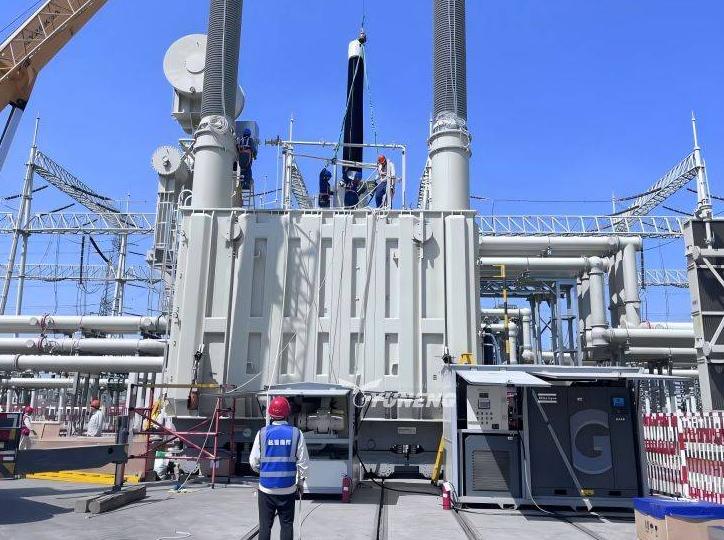
Stationary dry air generators are appropriate for transformers in substations, industrial buildings, or storage buildings for longer applications. Stationary generators provide a steady supply of dry air, which ensures large transformers remain safe from moisture in the long term.
Typical applications are:
- Operating continuously high-voltage transformers in substations
- Industrial plants with several transformers that require long-term humidity control
- Storage buildings for new or refurbished transformers for future installation
By utilizing a stationary dry air generator, users have consistent, automatic moisture control for reduced need for frequent manual intervention, protecting transformer insulation and extending equipment life.
Portable Dry Air Generator
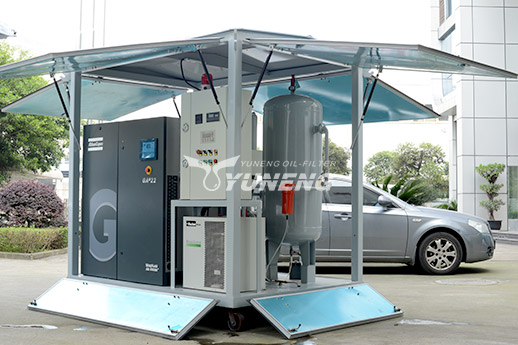
A portable dry air generator is designed with portability and versatility in mind; therefore ideal for field maintenance, temporary installation, or emergency service. The equipment is compact, easy to move around, and can be quickly connected to transformers in the field.
Applications are:
- On-site transformer maintenance or emergency drying
- Temporary installations during commissioning or relocation of transformers
- Remote or hard-to-reach locations where stationary systems are not possible
Portable units allow operators to respond instantly to moisture problems, minimizing downtime and preserving transformer performance even in extreme conditions.
In the field, many operators have discovered that combining stationary and portable dry air generators offers complete transformer protection with constant monitoring where possible and field versatility.
Stationary vs. Portable Dry Air Generator: Key Differences
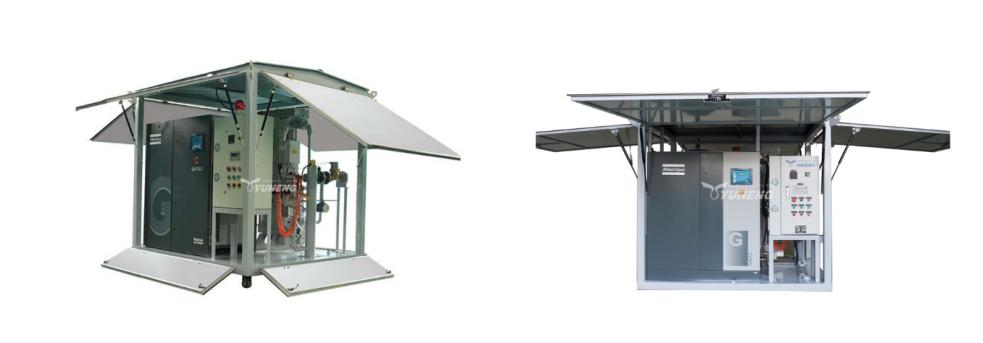
Both stationary and portable systems are of critical significance in transformer moisture control, but their use, operation, and performance differ to a large extent.
Here is a simple contrast between the two:
| Aspect | Stationary Dry Air Generator | Portable Dry Air Generator |
| Installation | Permanently installed in substations or industrial sites | Mobile unit, easy to transport and connect on-site |
| Operation Mode | Continuous operation for long-term moisture control | Intermittent or temporary use during maintenance or emergencies |
| Capacity & Performance | High-capacity system suitable for large transformers | Medium capacity, ideal for small or medium transformers |
| Maintenance | Requires scheduled servicing, often integrated into plant maintenance programs | Simple upkeep, designed for quick inspection and replacement in the field |
| Response Flexibility | Best for stable environments with constant monitoring | Ideal for fast deployment and emergency situations |
| Cost Consideration | Higher initial investment but lower long-term operating cost | Lower upfront cost and flexible usage for multiple sites |
| Application Focus | Continuous protection for critical transformers | Short-term drying, commissioning, or remote transformer maintenance |
In general, the stationary dry air generator is made to be reliable, perfect for situations where transformers are stationary and require constant protection. The portable dry air generator, on the other hand, offers versatility and rapid deployment, which are appropriate for service crews and transitory operations.
In my opinion, both complement each other. Some of our power generation and heavy industry clients have both fixed and mobile systems to offer coverage of installed as well as field repairs to provide all-around moisture protection for their transformers.
Which One Suits You the Best?
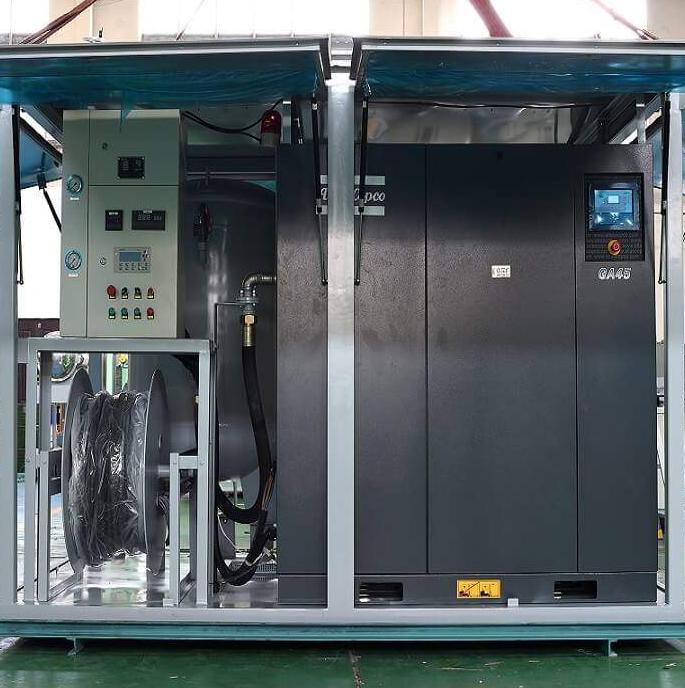
Selecting a stationary or portable dry air generator depends on your specific application requirements, environmental conditions at the location, and maintenance plan.
- If your transformers are in substations or plants where there is continuous use, a stationary transformer dry air generator is the most appropriate. It provides continuous, automatic protection against moisture, is stable in operation, and requires minimal operator attention. In the long run, it provides best-in-class reliability and economy.
- But if your work often includes regular site work, transformer testing, or emergency repairs, a portable dry air generator provides unparalleled flexibility. It can be easily moved to temporary or remote locations where your crew can immediately address moisture problems and avoid time-consuming downtime.
Based on our experience as a manufacturer, most customers get optimal performance by combining the two systems—stationary units for installations and portable units for in-field service. With this dual approach, every transformer in any location or application gets the optimum level of moisture protection and operating maintenance.
Summary
Both stationary and portable dry air generators play vital roles in protecting transformers from moisture damage. A dry air generator for a transformer helps maintain insulation integrity, extend service life, and improve operational reliability.
Stationary systems deliver continuous, long-term protection for fixed installations, while portable units offer flexibility for field maintenance and emergency applications. As a professional manufacturer, we recommend evaluating your transformer’s operating environment, maintenance frequency, and budget to choose the most suitable solution—or combining both types for comprehensive moisture control and maximum transformer performance.
Have interests in dry air generators for your power plants? For more details or tailored solutions, you can contact YUNENG. Our team will reply to you as soon as possible!

